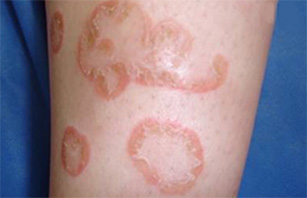Addition of PUVA therapy in achieving total skin clearance in a case of progressive symmetric erythrokeratoderma.

Downloads
DOI:
https://doi.org/10.26326/2281-9649.32.1.2318How to Cite
Abstract
PSEK is a rare, predominantly autosomal dominant, debilitating cornification disorder characterized by symmetric, well-demarcated, non-migratory, hyperkeratotic, erythematous plaques, primarily located on the face, palms and soles, and extensor aspects of the extremities. In the present case the plaques were small and reminiscent of psoriasis.
The pathogenesis is unknown, however studies have identified genetic mutations in loricrin, the major protein in cornified cell envelope, and connexin in individuals and transgenic mice with PSEK. The histopathology of PSEK is nonspecific (2, 3).
Currently, there are no existing randomized, controlled clinical trials for erythrokeratodermas due to the rarity of the diseases. Topical keratolytics, urea, ammonium lactate, tars, topical steroids, topical retinoids, and oral retinoids have been reported with limited or no success (1).
However, in our case it was the addition of PUVA phototherapy that helped the patient achieve complete body clearance.
